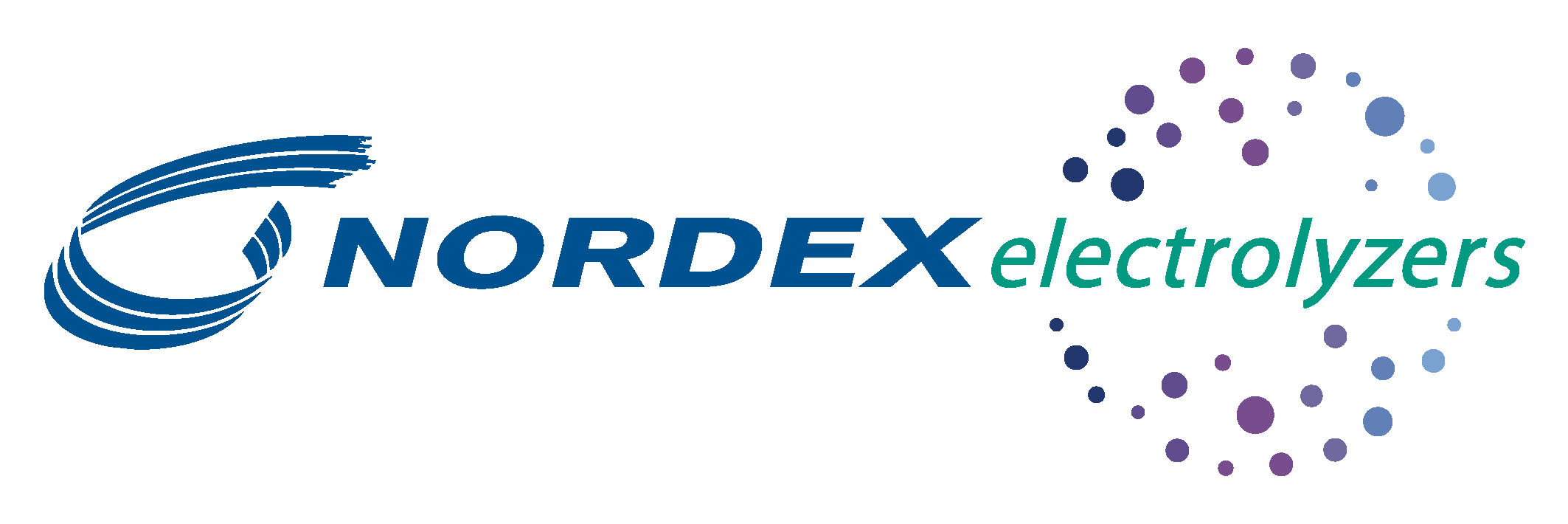PRESS RELEASE: Nordex Electrolyzers unveils the NX2500, the largest electrolyzer fully designed and manufactured in Spain
The company launches the NX2500, a 2.5 MW electrolyzer that positions the region of Navarra in Spain as a green hydrogen technology hub and marks the third milestone in its roadmap.
Nordex Electrolyzers, a joint venture between Sodena, the public investment company of the Government of Navarra, and Nordex Group, presented this morning at its testing facility in Lumbier the NX2500, its new 2.5-megawatt (MW) pressurized alkaline electrolyzer, during an institutional event attended by over fifty representatives from the energy sector, government, and business community.
The event featured the participation of María Chivite, President of the Government of Navarra; José Luis Blanco, CEO of Nordex Group; Mikel Irujo, Minister of Industry and Ecological and Digital Business Transition of the Government of Navarra; Iñaki Larraya, Managing Director of Sodena; and Luis Solla, CEO of Nordex Electrolyzers. During the event, authorities had the opportunity to see the equipment up close and witness its operation at the testing plant, designed as a validation platform for green hydrogen production technologies.
The NX2500 represents the third milestone in the development of a commercial product, continuing the technological progression initiated with the 50 kW (2023) and 500 kW (2024) models — the latter currently operating at Viscofan’s headquarters as part of the H₂OP project promoted by the Government of Navarra.
The new product multiplies the capacity of its predecessor by five. Its validation in Lumbier fulfills the milestones set out in the IPCEI Hy2Tech program, the major project of common European interest for the promotion of green hydrogen, and strengthens Navarra’s position as a leading technological hub in Europe’s energy transition. “This milestone shows that the Nordex Electrolyzers project is progressing as planned and that our technology is commercially ready. We have successfully completed each development stage with a high level of local integration,” said Luis Solla, General Director of Nordex Electrolyzers, during his speech. “The NX2500 is the largest electrolyzer designed and manufactured in Spain and reflects the talent and industrial capacity in Navarra to lead the hydrogen economy,” he added.
Efficiency, scalability, and design for renewable energy
With a nominal power of 2.5 MW, the NX2500 can produce over 45 kilograms of green hydrogen per hour, powered by renewable energy sources such as wind or solar.
The system uses pressurized alkaline electrolysis technology, a robust solution with high durability (over 80,000 hours of service life) and low maintenance requirements.
Among its main innovations are its modular and scalable design, which allows up to four 2.5 MW units to be combined to reach configurations of 5 MW and 10 MW, and its mechanical and fluid dynamic optimization, which minimizes energy losses and maximizes electrical conversion.
“The NX2500 is designed to operate under variable renewable generation conditions, following the natural cycles of wind or sun without losing efficiency,” explained Solla. “This makes it a vital element in integrating green hydrogen into the energy mix and decarbonizing the most energy-intensive industrial sectors”.
The company estimates that the new system will significantly reduce the cost of green hydrogen production and help improve competitiveness against fossil fuels — one of the key challenges affecting its global deployment pace.
An industrial and long-term vision
During the presentation, José Luis Blanco, CEO of Nordex Group, highlighted the project’s relevance within the company’s global strategy, while also pointing out the challenges of the current context: “The launch of the NX2500 confirms the technological and industrial capabilities present in Navarra and Europe to lead this new energy era. However, advancing with technology developed and manufactured here requires conditions that, as of today, are not always in place.”
Blanco emphasized that although Europe has been a pioneer in the green hydrogen push, political and regulatory priorities have been shifting in recent months, creating growing uncertainty: “Europe has led the vision for green hydrogen, but we still lack a sufficiently clear and predictable framework to instill confidence for large-scale industrialization. Europe needs to commit to this energy vector, just as it did with wind energy in the late 1990s and solar in the late 2000s. Time has proven those bets right, and today those technologies are the cheapest sources of electricity.”
He also praised the efforts of the team and the regional ecosystem, stressing that talent, innovation, and industrial ambition exist — but need a solid political and economic foundation to thrive: “Navarra has once again demonstrated its ability to lead advanced industrial developments. We will continue to support that vision, but it is essential for Europe to clearly define whether it truly wants green hydrogen to be part of its own industrial fabric — or if it will settle for relying on external technology.”
During the presentation, María Chivite, President of the Government of Navarra, reminded attendees that Europe has identified green hydrogen “as a strategic vector” that will enable progress on two vital fronts for the Union: decarbonization and energy independence. “But this will not be real if the technology that makes it possible has to be purchased from abroad. Without control over hydrogen generation technology, we will simply be replacing one dependency with another,” she emphasized.
On the other hand, Chivite pointed out that the regional government has included hydrogen as a strategic vector in the Navarra Energy Transition Agenda, with the goal of reaching 150 MW of green hydrogen production by 2030. She therefore emphasized the value of having “cutting-edge technology, developed locally, that meets both current and future market demand in Europe.”
In the same vein, Mikel Irujo, Minister of Industry, Ecological and Digital Business Transition and President of Sodena, stated that the financial support provided by the public investment company as a shareholder of Nordex Electrolyzers “has been a key driver in making strategic and pioneering projects like this one a reality for Navarra, in partnership with an industrial partner of international scope.”
According to Irujo, hydrogen “is destined to become one of the most important energy vectors of the future.” In his view, it will not only enable “better management and integration of renewable energies, reducing both dependence on fossil fuels and greenhouse gas emissions, but also allow for the decarbonization of numerous industrial sectors.” This project, therefore, “is a vital industrial commitment for the future of our region,” he concluded.
Public-private collaboration and European support
Nordex Electrolyzers was founded in 2022 as a spin-off of Nordex Energy Spain, with an initial investment of €30 million shared between the Nordex Group and Sodena, the public company of the Government of Navarra dedicated to business development.
It represents Sodena’s second-largest investment in the field of renewable energy and has received €12 million in European funding through the IPCEI Hy2Tech program (Important Project of Common European Interest), the EU’s major initiative to accelerate the development of the hydrogen value chain.
“The Nordex Electrolyzers project is a clear example of effective public-private cooperation,” said Luis Solla, who expressed gratitude for the institutional support and also thanked the Sodena team for their professionalism and commitment to the project. “We have a privileged ecosystem: technology centers, universities, industrial suppliers, and a government that understands energy innovation as a national policy.”
A milestone for Navarra and Spain’s hydrogen industry
The NX2500 has been entirely designed, assembled, and tested in Navarra, marking a milestone for Spain’s hydrogen technology industry. With the validation of the NX2500, Nordex Electrolyzers completes the third phase of its roadmap and prepares to design 5 MW and 10 MW modules in 2026.
The company aims to strengthen Navarra’s role as a green hydrogen industrial development hub in southern Europe.
“Green hydrogen is not a distant promise — it’s a reality that is already being produced, tested, and improved here in Navarra,” stated Solla.
Using the NX2500 electrolyzer in combination with wind or solar energy will enable the production of thousands of tons of clean hydrogen annually, avoiding the emission of thousands of tons of carbon dioxide currently generated by fossil fuels.
This breakthrough directly contributes to the goals of the Paris Agreement and the European climate neutrality strategy for 2050, while also reinforcing the continent’s energy independence.
“The NX2500 demonstrates the potential of combining wind power generation with hydrogen production as two sides of the same transition,” said José Luis Blanco. “Nordex Group wants to be an active part of that transformation, showing that decarbonization can — and must — also be an industrial opportunity.”
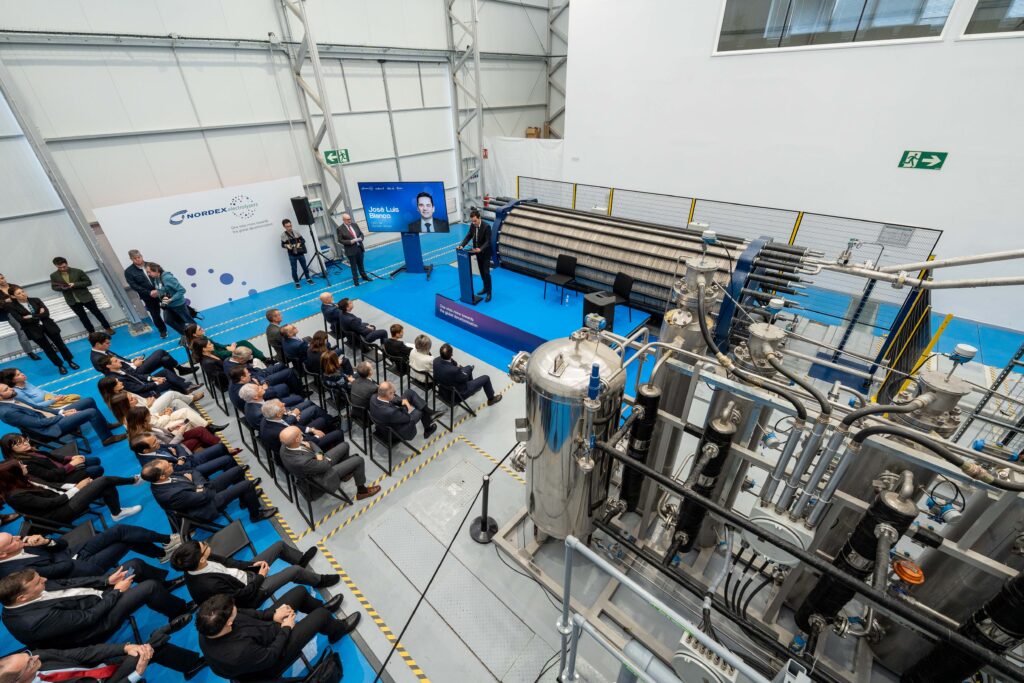
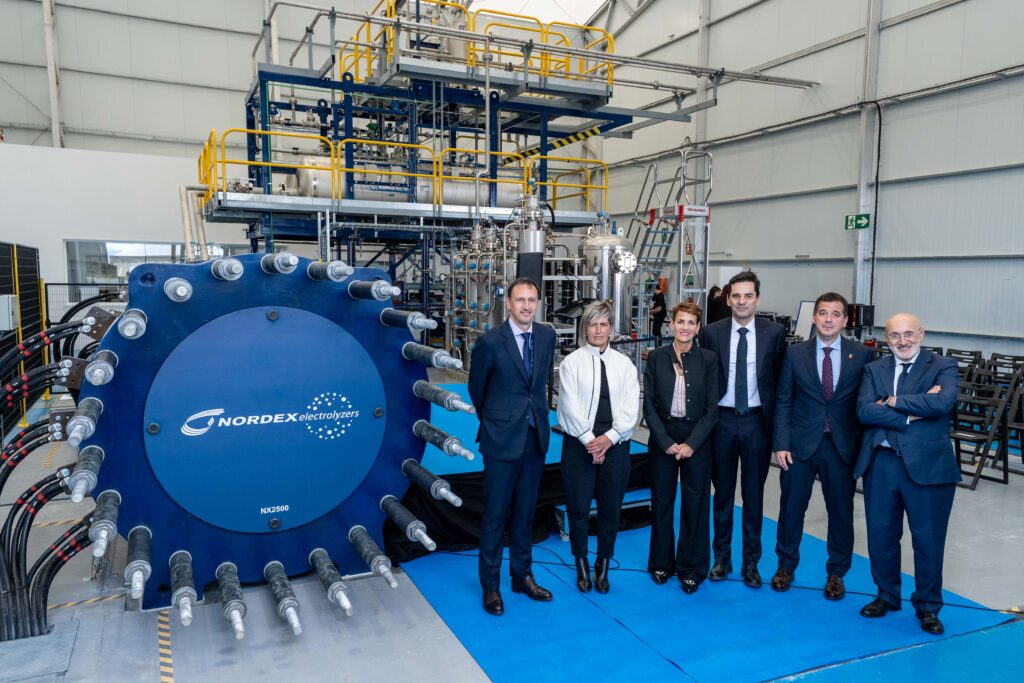
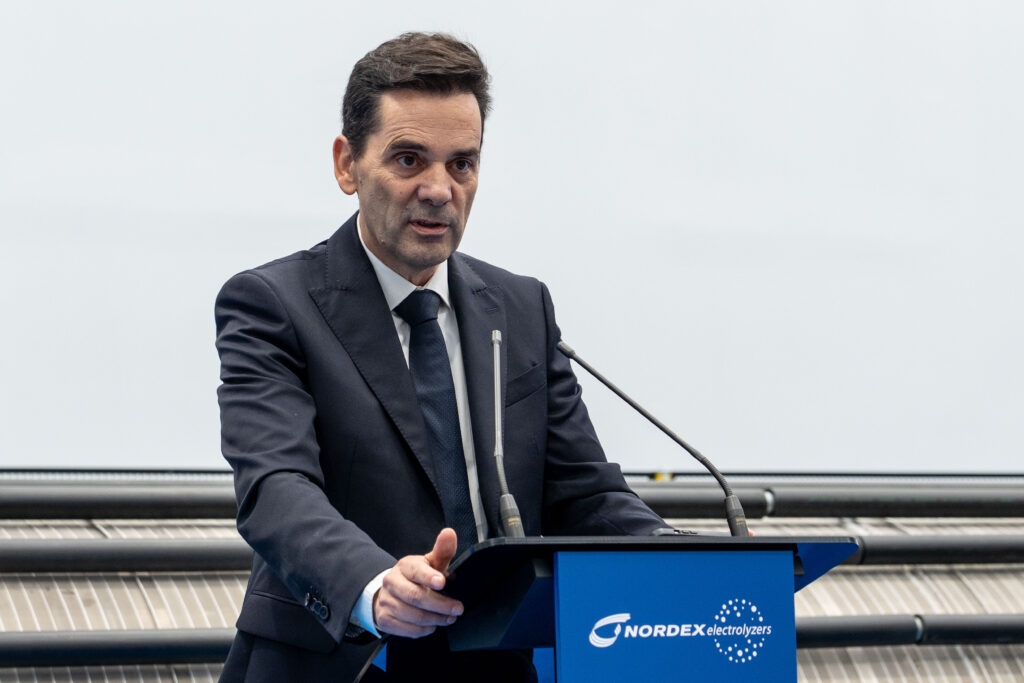
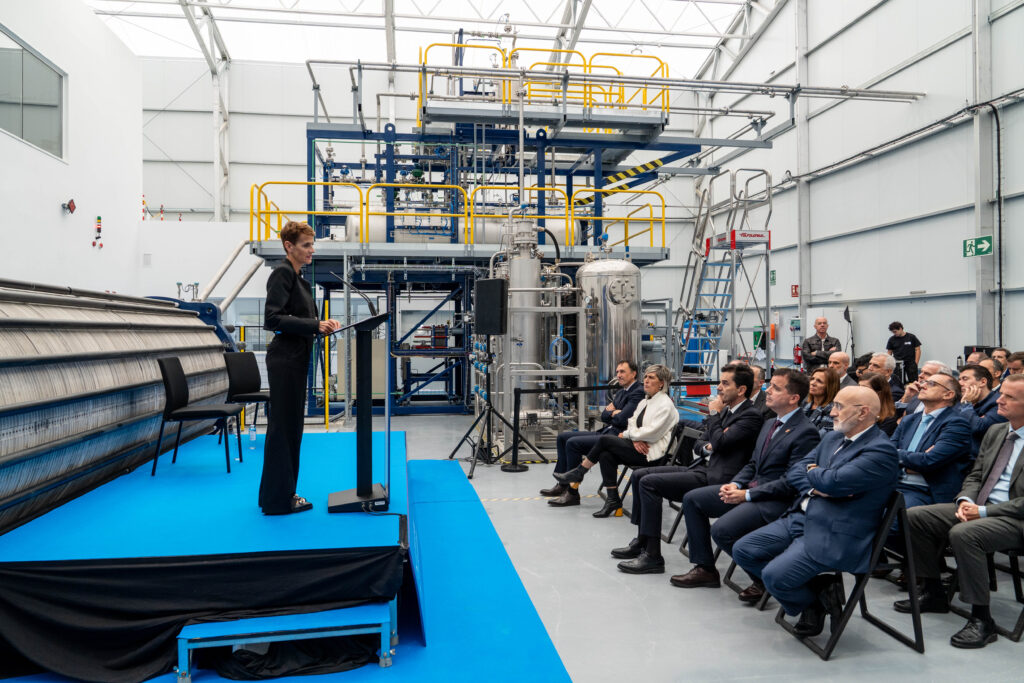
Group photo, from left to right: Pablo Pulpeiro (CEO of ANGH & Nordex Electrolyzers President), Rocío Monclús (Lumbier Mayor), María Chivite (President of Goverment of Navarra), José Luis Blanco (CEO Nordex Group), Mikel Irujo (Regional Minister of Industry and Ecological and Digital Business Transition of the Government of Navarra) y Luis Solla (CEO Nordex Electrolyzers)
